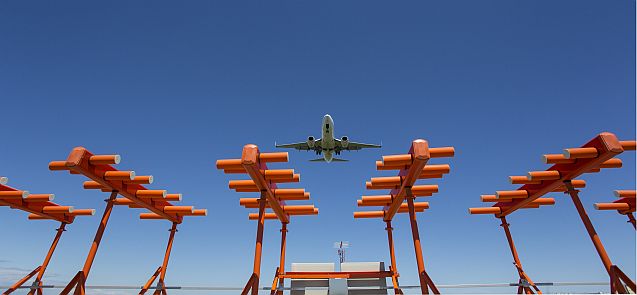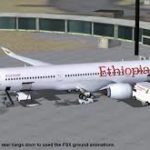
As Nigerian airlines prepare for increased air passenger traffic during the Christmas holidays, which is the busiest season in the year, they have expressed the fear of massive flight disruptions due to the inclement harmattan weather.
This is as the Nigeria Airspace Management Agency (NAMA), acknowledged that many airports in the country have not been calibrated to know the efficiency level of the landing equipment and instruments.
In the same vein, the Nigeria Meteorological Agency (NiMET), Wednesday, warned of an approaching dust haze occasioned by strong winds in some parts of the country.
The agency said some parts of Katsina, Kano, Nguru, Jigawa, Bauchi, Gombe, Potiskum and Maiduguri would by yesterday begin to experience deterioration in horizontal visibility.
It also stated that the dust haze is expected to move southwards within the same period.
Domestic airlines that have increased their frequencies to certain airports, which they expect to have influx of travellers during the Yuletide, are worried that they might face the same weather challenges they had faced the previous years during the Christmas period.
This is made worse by the fact that some airports in the country have poor landing aids, which prompted some of the facilities to be downgraded and some of them may not offer flight services beyond daylight period, known as Visual Flight Rules.
In the previous years, harmattan spewing dust haze had forced airlines to cancel their flights and at certain days they resorted to operating very early in the morning and evening when visibility had improved.
On calibration of airport instruments and equipment, the Managing Director, NAMA, Mohammed Odunowo, explained that the agency had trained its own personnel to carry out the calibration exercise but currently the officers that conduct the exercise are foreigners, but the aircraft used for the calibration is owned by the agency.
Out of the 32 airports in Nigeria, only four were calibrated by NAMA and these are the four international airports in Lagos, Abuja, Port Harcourt and Kano.
Odunowo said: “When it comes to inspections for flight calibration, we engaged two pilots and 10 engineers that we sent for training in the US and the UK and in Germany. So, they have done the training, they are doing the on-the-job training, that is practical flying and flight inspection of the equipment. And I said also that they have graduated into routine or regular flight calibration.
“But on flight commissioning, we have the next phase of calibration with our technical partners from UK that are training them. They will roundup flight commissioning in November when we do the next round of flight calibration.
They would have gotten enough hours for them to be able to standalone for both flight calibration and commissioning. And I mentioned the airports that were due was Anambra, Bayelsa and Asaba, just one component of their ILS (Instrument Landing System), which is the flight slope, which has been done. So that is that. So, we actually have indigenous team doing the calibrations and just due for flight commissioning by November”.
Odunowo added that the agency was also constrained by funding, since it exited from the federal government budget, which hitherto funded its capital projects, adding that the airports owned by the state governments ought to show more financial commitment to the agency.
“The agency was exited from the federal government budget last year. That means NAMA has no intervention whatsoever from FGN. Before now, every year, the federal government might do an intervention by way of maybe funding a special project. And that comes in from the federal government budget. We are 100% self-funded, but interventions used to come from the federal government on special projects that are beyond the agency.
“But now we have been exited, and that means we don’t have such interventions anymore. And then we are losing 40% of that same revenue to remittances to the federal government. Then the state government airports, of course, we are aware of the challenges state governments are having, having established these airports. They have all made effort to transfer them to the federal government. And while doing that they are owing a lot on charges that, of course, recovery charges that we have,” he said.
NAMA also disclosed that another problem some of the airports face is the fact that many of the airports are in Category 2 and category 3 ILS, but the Federal Airports Authority of Nigeria (FAAN) does not have corresponding equipment to like the installation of the appropriate lighting system to fully utilize the ILS, hence the downgrade of some of the airports to only daylight operation.
One of the airports that would be very busy during Christmas is the Anambra International Cargo Airport, Umueri.
The Managing Director of the airport, Mr. Martin Nwafor, told THISDAY that the major challenge the airport is facing is its restriction to daylight operations, disclosing that the airport has installed all the equipment for night landing but they need to be calibrated and commissioned before they would be put to use.
He said the equipment has to be certified after calibration before the airport will start Instrument Flight Rule (IFR) that is, landing and taking off in the night.

“We will start night flight service as soon as we have our equipment, which are the navigational aids and landing aids put in place properly. They have all been installed, and we are just waiting for flight calibration (NAMA) and fight check, which the Anambra state government paid for last year. So, as soon as we have that, our challenge will be half solved. And security was also a big challenge and it is still a challenge but at the moment we have a good number of mobile policemen at the airport, civil defense, and the village vigilante. We make use of everything that is security and we have solar lights on the airport road in and on some parts of the operational fence of the airport. These are how we’re working hard to get over the challenges we are faced with,” Nwafor said.





